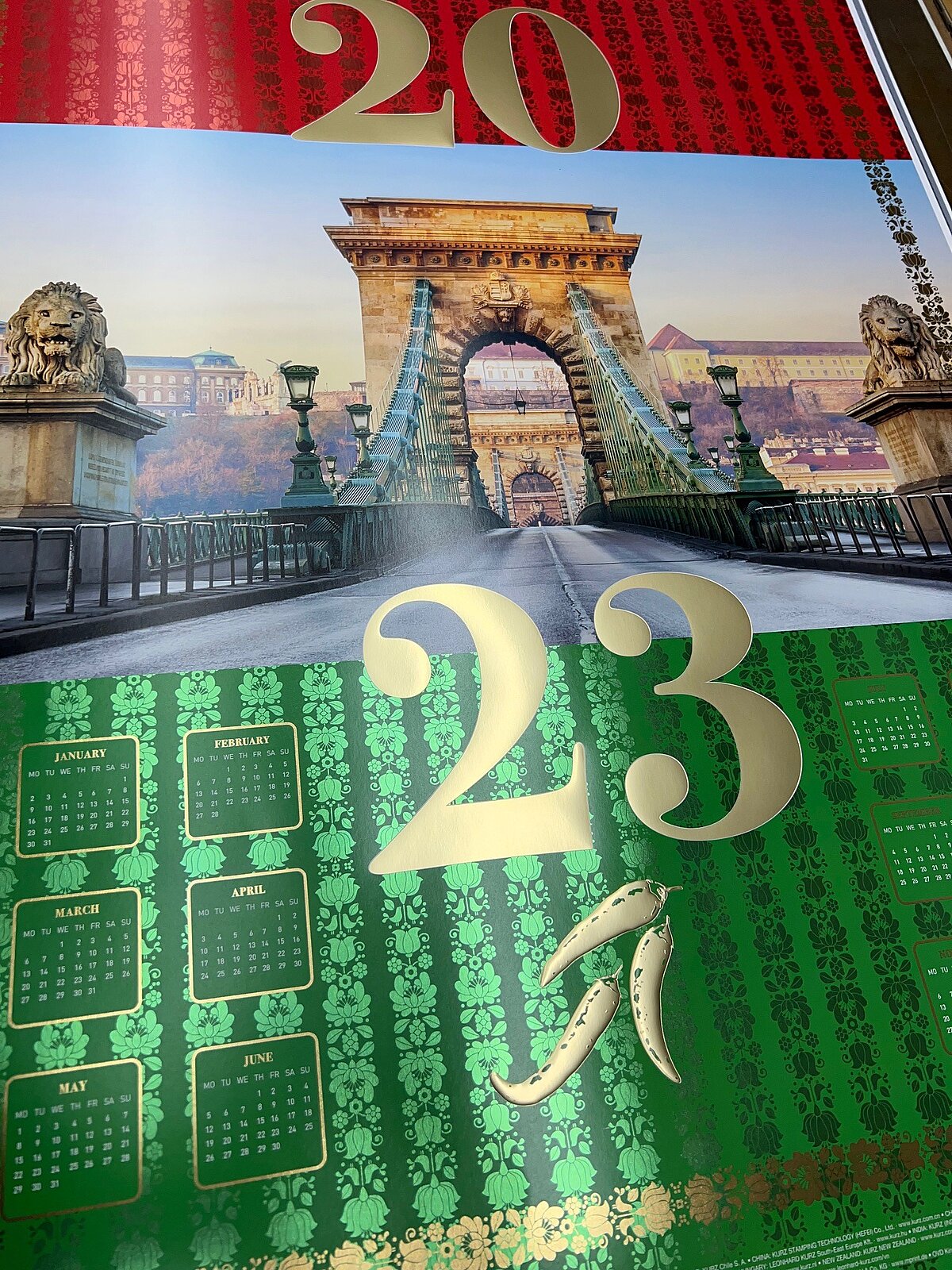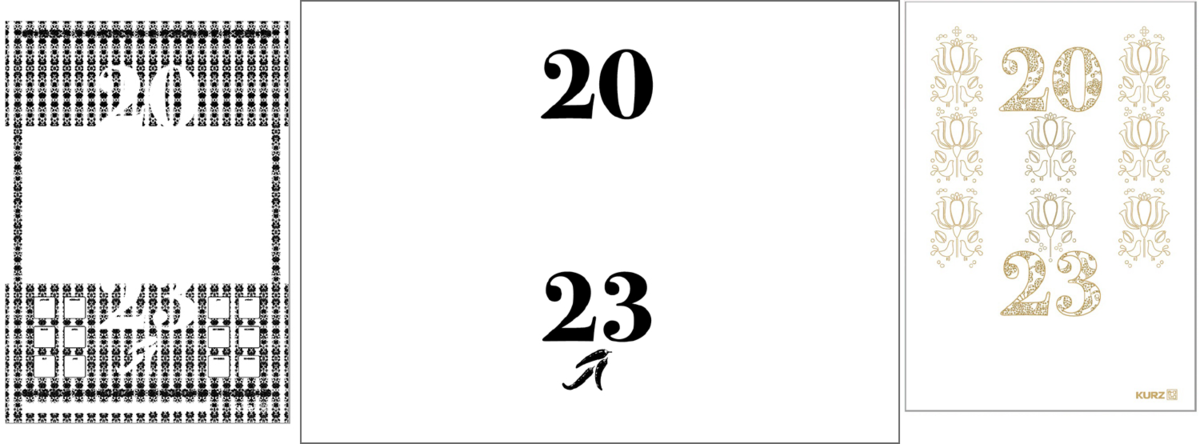In 2023, we continue a long-standing tradition and once again launch a decorative KURZ wall calendar. This time, our calendar shows off Hungary, and more specifically the city of Budapest. In our article, you can find out more about the background and the decoration processes used to make it.
Every year, the KURZ wall calendar focuses on a different country, always picking up elements typical of that country. In 2023, for example, the Széchenyi Chain Bridge in Budapest is the main motif framed by other symbols that reflect Hungary. By choosing this country, we would like to express our special appreciation to our Hungarian branch.
The Széchenyi Chain Bridge is one of Budapest’s most famous landmarks and also helped the city get its name. Until 1839, the cities of Buda and Pest existed independently of each other - because before the bridge was built, there was no permanent connection between the two trading locations. The bridge is therefore not only responsible for the name of the capital, but also for the new economic upturn of the two cities, which were still separate at the time.
If you look through the gates of the Chain Bridge from the Pest side - where KURZ's Hungarian branch is also located - you can see Castle Hill in the Buda Castle District (Várnegyed in Hungarian) to the west of the Danube. This baroque district, which houses the Castle Palace and other sights, is a popular destination for all visitors to the city. Although the district has already been almost completely destroyed twice, it still exists today. Extending from Vienna Gate to St. George's Square, it used to form the city center of Buda, and today it is part of the first district of Budapest.
The picturesque cityscape, which is the focus of the KURZ wall calendar, is framed by the country’s national colors, which are also found in the Hungarian flag. The red symbolizes power and the blood that the Hungarian people have shed on their way to independence. White stands for purity and cleanliness, and also forms the perfect background for the motif. Finally, the color green stands for revolution and hope.

A culinary detail was added in the form of three bell peppers under the year, which are typical of Hungary. Although paprika is used primarily as a spice in almost every national dish, the plant is anything but native to Hungary. In fact, the Turks brought it into the country in the 16th century. At that time it was forbidden for the Hungarian people, and today it is said that the first seeds were stolen by a dancer and then planted.
The KURZ wall calendar received the perfect finish in a three-step finishing process that optimally showcases the individual elements. It began with a four-color overprint of the cold transfer with ALUFIN® KPS (patent pending). This was followed by hot stamping with LUXOR® 429 N. The year number was given a flat finish, and the peppers a relief finish. Finally, the decorations and relief embossings of the year number, the folkloric symbols, and the KURZ logo were created with LUXOR® 385.


The technologies and finishings used are only a small part of the broad portfolio we offer you at KURZ. We will work with you to find an individual solution tailored to your needs. We are looking forward to your inquiry!
You're in the right place! Just drop us a message. How can we help?